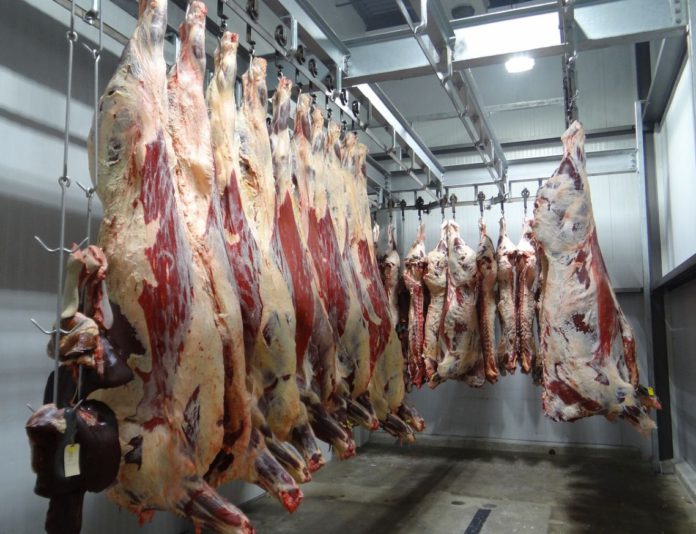Bord Bia has outlined its outlook for the Irish beef industry for the remainder of 2021 and into 2022.
In response to questions That’s Farming posed, a spokesperson firstly pointed to the “improvements” in the beef trade across “key” EU markets.
They cited tighter supplies and stable consumer demand for beef as key drivers of this.
They added that demand for manufacturing beef has been “particularly strong” during 2021 as foodservice has reopened.
According to Bord Bia, there has been a “good recovery” in Irish beef exports to the UK since June.
The state agency reports that exports to the region between June and September are operating 13% ahead of 2020 levels in value terms.
Irish beef industry
The latest available AIMS cattle population data for September 2021 indicates that the number of male and female beef cattle on-farm in the 24–30-month age category was marginally lower than the corresponding period in 2020.
Furthermore, the number of dairy males in this age group was back by 12% to total 58,000 head.
“This would indicate cattle supplies for slaughter are expected to remain tight in the shorter term.”
“As you move into the lower age groups, there has been a notable improvement in cattle numbers.”
“In the 18–24-month age category, the number of beef males has increased by almost 26,000 head (+16%). The number of beef heifers in the same age group increased by 22,000 (+12%).”
“The number of dairy-sired male cattle in the 18-24-month age bracket have also increased by 22,000 head (+17%).”
“The increase in the number of cattle in this age group is a direct result of reduced calf export activity in spring 2020 with more calves staying in Ireland for beef production.”
“This is expected to contribute to an increase in cattle availability for slaughter as we move into 2022.”
The spokesperson said that UK beef production will remain tight into the first quarter of 2020. They added that this will “maintain import opportunities for Irish beef”.
Europe and further afield
Meanwhile, in Europe, the EU Commission’s Beef Forecast Working Group predicts that beef production in 2022 to decline by -1.4%, with consumption “largely unchanged”.
“Looking at the global picture, some of the larger exporters, including the United States and Australia, will see some recovery in production.”
“This has led the USDA’s Foreign Agricultural Service to predict an increase of +0.6% in global beef supplies.”
“However, with consumption globally also predicted to grow, this will see a +1.9% increase in global import levels,” the spokesperson concluded.
See beef price updates on That’s Farming.





